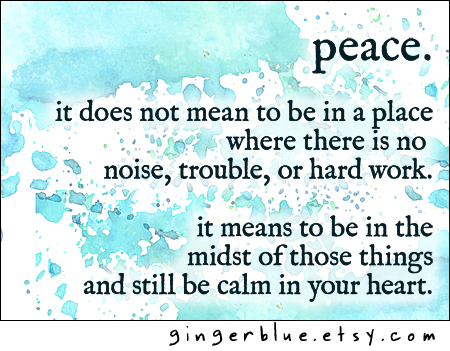
I have a confession:
while I think meditation is *really* important and very effective, I often find it very difficult.
There are long periods of time when I’m totally obsessed daily meditation, but then I’ll go for months where I’m completely resistant to it and avoid it at all costs. (For instance, right now…)
However, I’ve come to realize that mindfulness is really important to well-being. And if I’m not meditating, then I need to find other ways to stay tuned in to what’s going on inside me. For me, it’s more about taking inventory than anything else, just to get a general sense of what the heck might trigger some anxiety and what might be weighing me down.
Right now the most helpful mindfulness technique is something that I learned from my computer.
(Yes, you read that right- I learned a mindfulness practice from my computer. Before you roll your eyes and click away, just give me a minute to explain…)
See, whenever my computer starts acting strange, or slows down, or starts doing that “spinning beach ball” thing, I open up a nifty app called “Activity Monitor.” “Activity Monitor” came installed on my MacBook and is basically an app/program that lists EVERYTHING – every single process – that my computer is working on. It also lists how much energy and resources the computer is devoting to each task.
If there’s something my computer is stuck on, or devoting insane amounts of resources on, I can quickly pinpoint the issue and with a few clicks of the mouse, my computer is back to its responsive self. Sometimes it just requires closing a window, sometimes I have to save what I’m working on and restart an app, and then sometimes the computer needs me to shut it down completely and restart. But by giving me a list of all the stuff my computer is crunching through, I get a better idea of what I need to do to make it work better.
One day while I was in the midst of a panic attack and all my regular mindfulness/relaxation techniques were not working, I suddenly thought of my MacBook and the “Activity Monitor” app and decided to see if I could apply it to my OWN system. It felt good to step away from the personal whirlwind of stress, which can often seem all-consuming, and look at it all from a sort of “systematic” and clinical perspective.
So I imagined I was like some giant MacBook, and called on my own “Activity Monitor”. I simply started listing EVERYTHING that my head and heart were working on and how much of my resources and energy were going to each one of those things.
I have to admit- I was surprised that the list was so long.
First I realized that there are quite a few big things that basically take up permanent space in my head and heart and over which I agonize constantly. Some of those things will never come off my list of concerns and worries, but it felt good to know I had knowledge of them and understood just how much they could tax my system.
On the flipside, I realized there were a tremendous amount of small, silly concerns that didn’t add up to much *individually*, but when piled together, took up a tremendous amount of energy to keep track of. For example: what to make for dinner, what book to read next, when to go for a blood test, what groceries need to be ordered, when the cats need to go to the vet, when Gracie’s next allergy shot is, etc. So, I made an effort to either resolve and/or clear those things, and get them out of my head and onto paper as soon as possible.
Now I run “Activity Monitor” scans on myself pretty regularly- usually every day when I’m in the shower. I quickly go through what I’m “processing” in my head and heart, and then I take all that information and decide what deserves my internal resources and attention. Every day I’m surprised at the little tiny things that enter through the cracks- even the most mindful and aware people find themselves fussing over meaningless things. It’s just human nature. But it’s also a good thing to keep track of those tiny things just to prevent them from building up into heavy burdens over time.
So, no, the “Activity Monitor” practice is not as sacred or as cool as meditation, but it *is* a helpful way to stay mindful and aware of what’s going on in your head and heart. Plus, it feels really good to do it on a regular basis and witness the list of concerns and worries get smaller and smaller.
Chel Micheline is a mixed-media artist, curator, writer, and avid gardener/reader/swimmer who lives in Southwest Florida with her husband and daughter. When Chel’s not making art or pondering the Bliss Habits, she’s blogging at gingerblue.com (come say hi!) or posting new things in the gingerblue etsy shop.


What a great idea Chel! It’s so easy to tell ourselves that we don’t have time to stop and look at what’s going on in our heads and in our bodies – and that’s the time we really need to! I’m beginning to learn that my head needs time out now and again just to allow me to come back to myself and to focus. Thank you for your perspective! (I don’t have a macbook and I don’t think my laptop has a similar system, but I get what you mean! 😉 )